View of the Seto Inland Sea from my bus window from Omishima for my return to the city temples in Imabari.
Korogashi is a Japanese word meaning where the pilgrim or henro-san falls down. Of course, it is interpreted with more than one meaning. There is the physical one where the henro-san tumbles down a steep mountain side. The mental one is the failure of will that makes the henro-san turn back, therefore not completing the pilgrimage as they imagined!
My Korogashi
That is the observation I made before reaching temple 12. Soon after, I experienced my own korogashi. I fell down a mountain, got turned around when I finally recovered, and arrived at the temple… after It closed. I got back on the path with a little help from a few ohenro friends.
Over the few weeks following, I got turned around once or twice more. Indeed, I’ve even been severely discouraged.
A mistake became a wonderful misstep that recharged my soul.
I like to believe that Kōbō Daishi determined that my spiritual motives were enough to allow me to remain on my path toward enlightenment.
City Temples
The locations of these temples make it convenient to visit them without moving in and out of accommodations each day. It enables pilgrims to visit temples during the day and experience the city at night. The same situation existed in Matsuyama.
It is the pilgrims choice to visit one temple at a time or all the temples in a day. The city temples are close together – less than five kilometers apart from each other.
- Temple 55 Nankobo
- Temple 56 Taisan-ji
- Temple 57 Eifuku-ji
Let’s walk together and visit these temples in and around Imabari city.
Temple 55 Nankobo
Temple of the Southern Lights
Officially, it is called Kōmyōji Kongōin Nankōbō.
First a shrine, the precinct was built by imperial order in 594 on Omishima. A century later, there was concern that the shrine’s rituals were neglected due to wind and waves. It was moved here and designated as a temple. It was named Jigozen of Mishima.
Later Kobo Daishi visited the temple and designated it as the 55th temple of the Shikoku Pilgrimage.
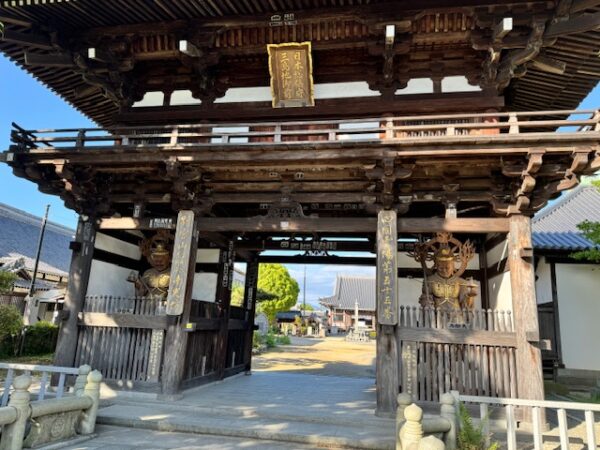
Four fierce Nio guardians decorated with gold leaf reside in the temple gates.
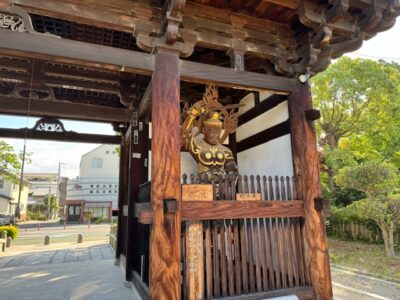
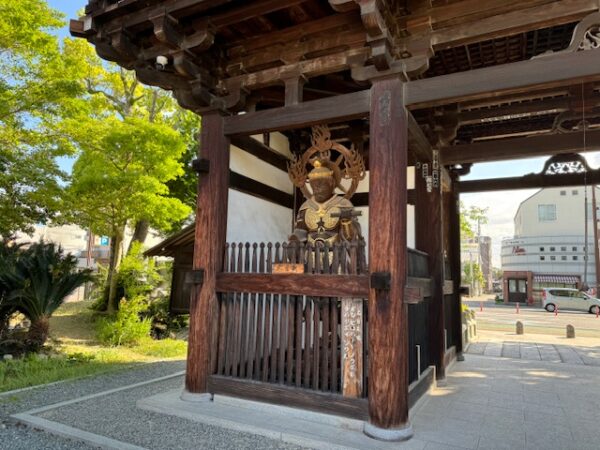
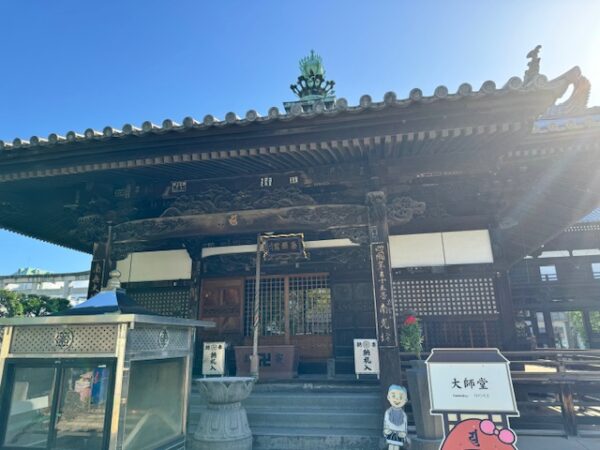
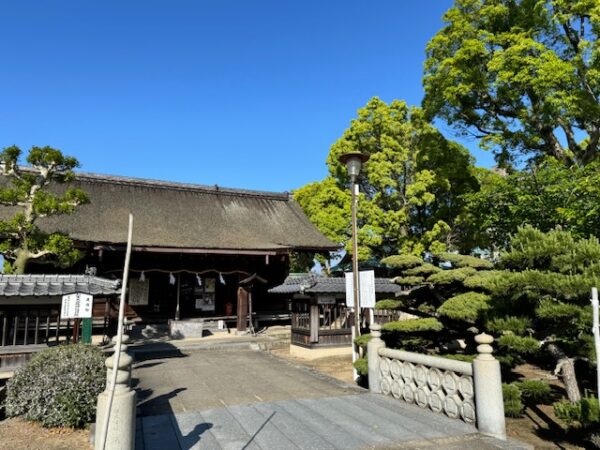
Among the Shikoku pilgrimage temples, Nankobo is the only temple with bo in its name, meaning priest’s lodging. His quarters are off limits to visitors.
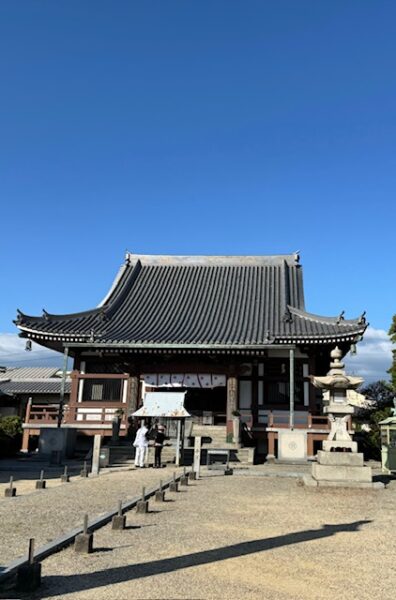
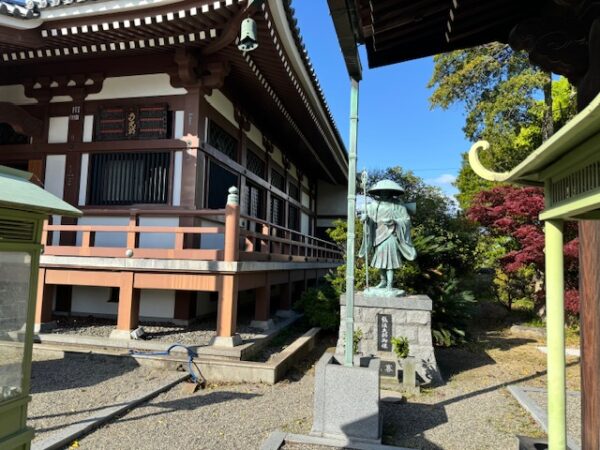
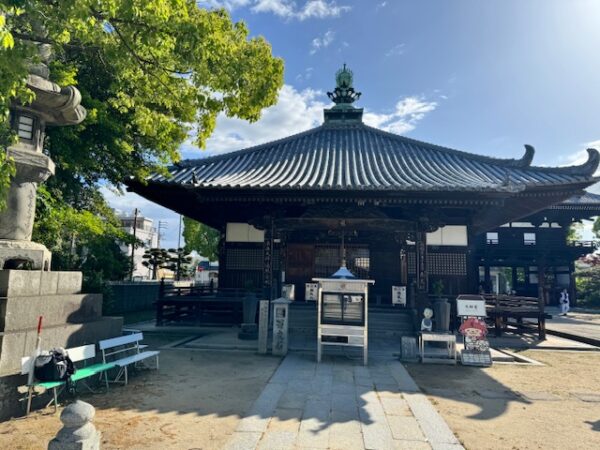
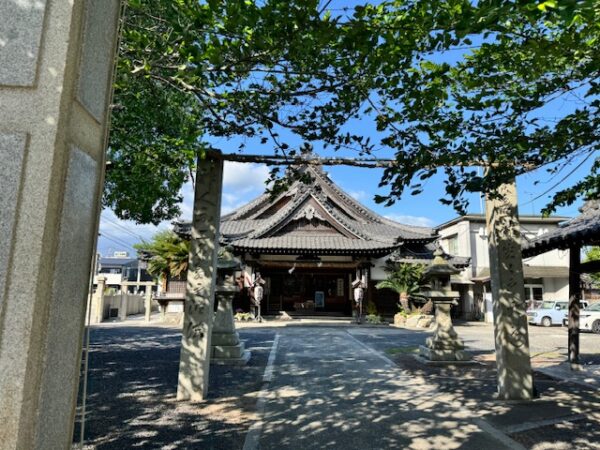
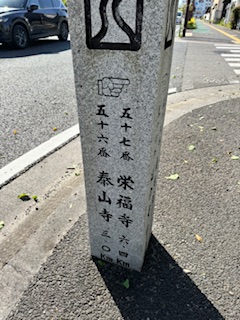
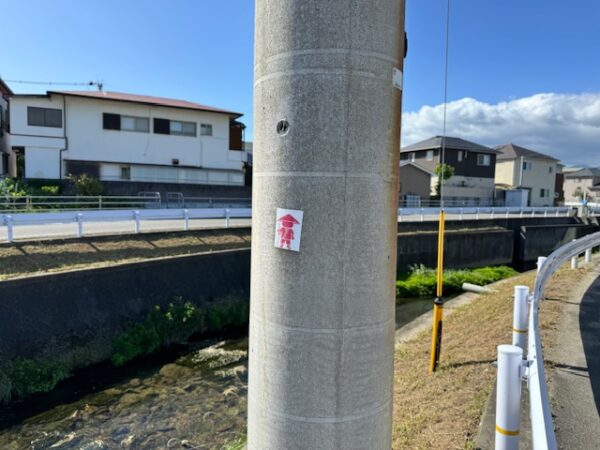
56 Taisan-ji
Temple of the Mountain of Peace
Much of the walking surface is on asphalt through quiet neighborhoods in Imabari city.
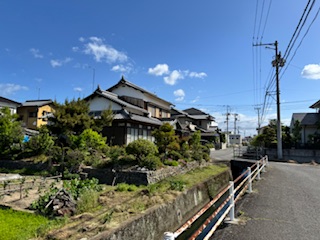
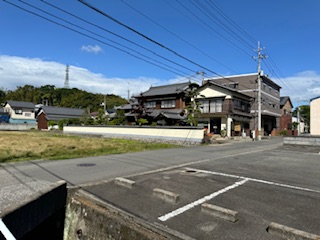
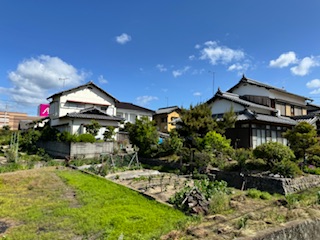
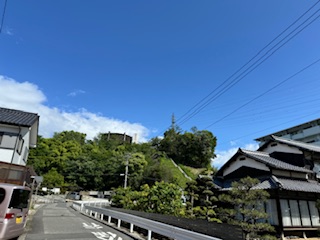
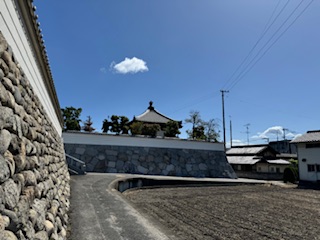
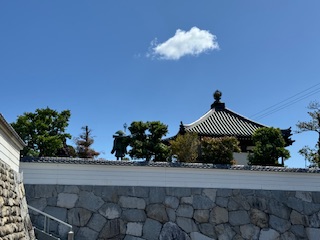
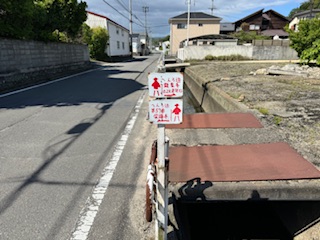
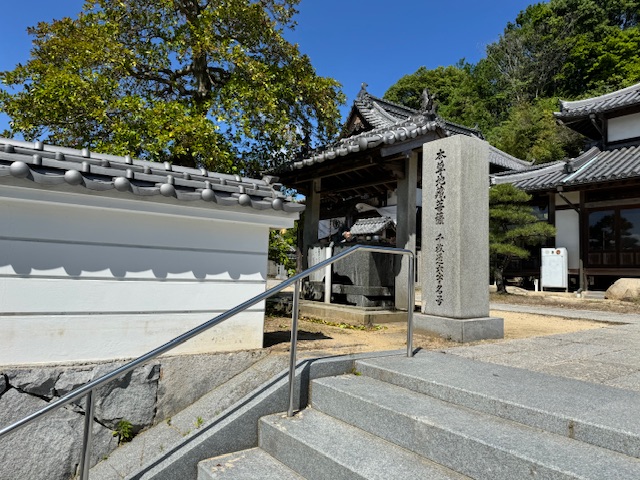
The temple does not feature a gate in the traditional sense.
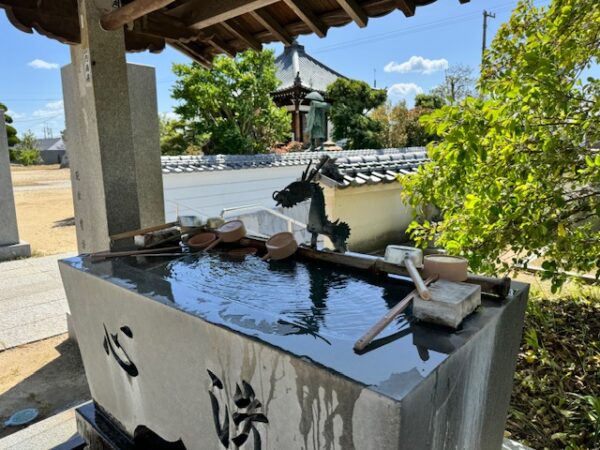
The stone fountain at the temple has a dragon spigot.
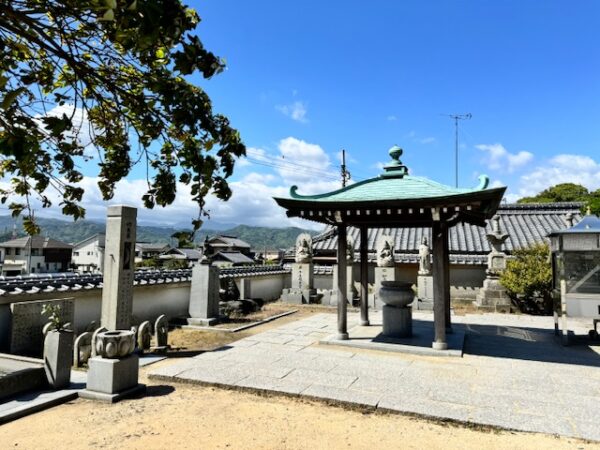
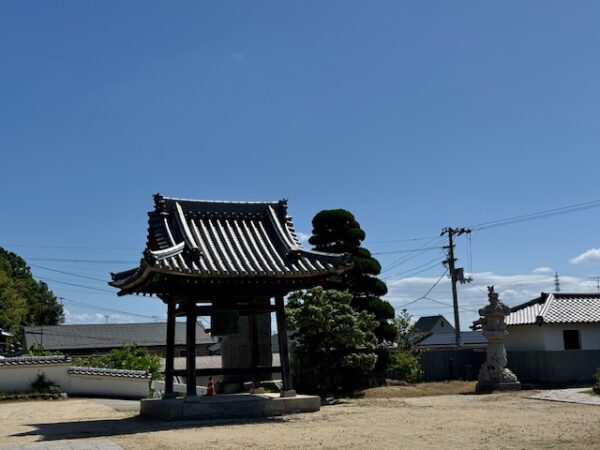
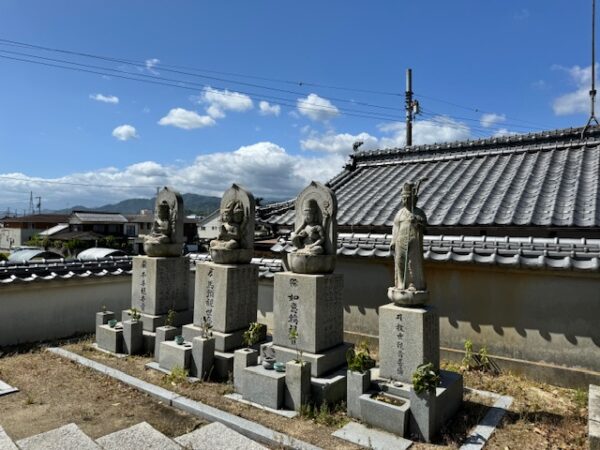
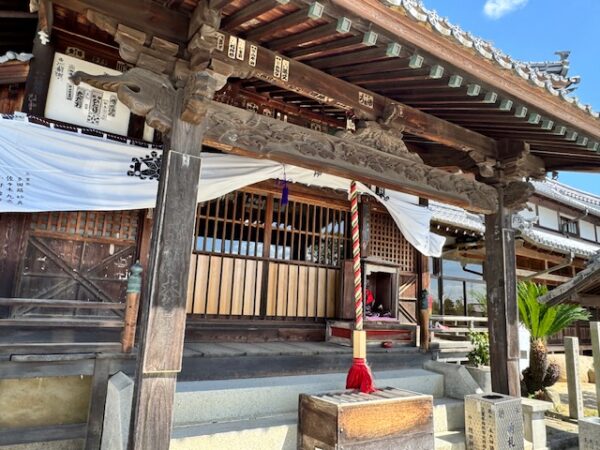
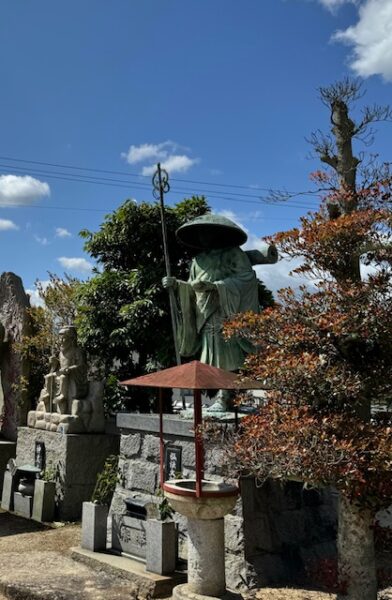
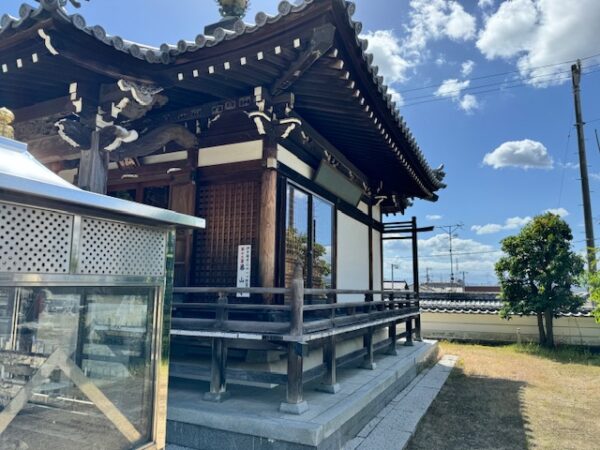
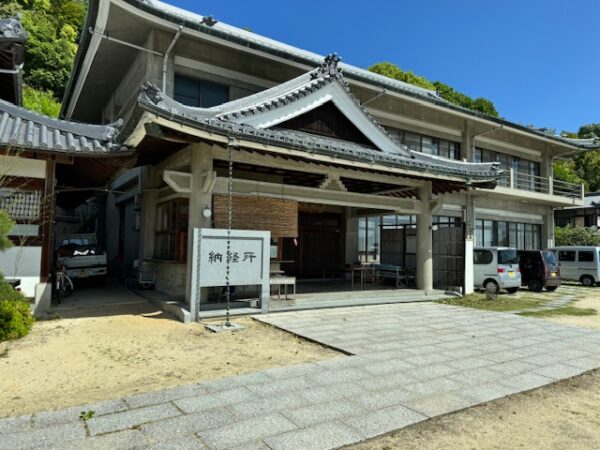
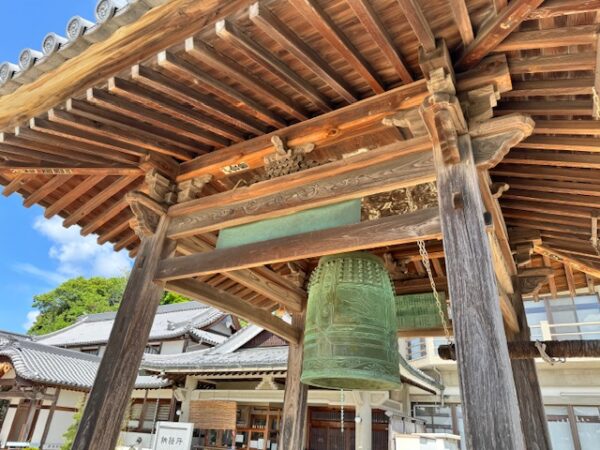
The temple belfry.
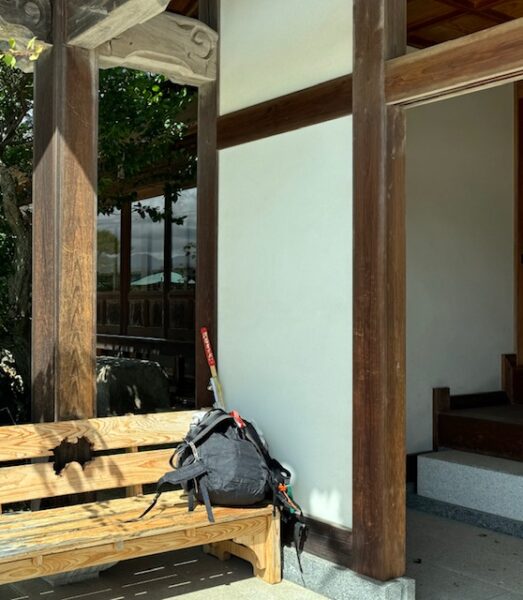
Before entering the temple office for a stamp for my stamp book, I leave my backpack on a bench. It is possible to leave it there while visiting the temple grounds. I have done it only a few times at smaller temples or where a very steep staircase dares you to ascend higher and higher with it on your back!
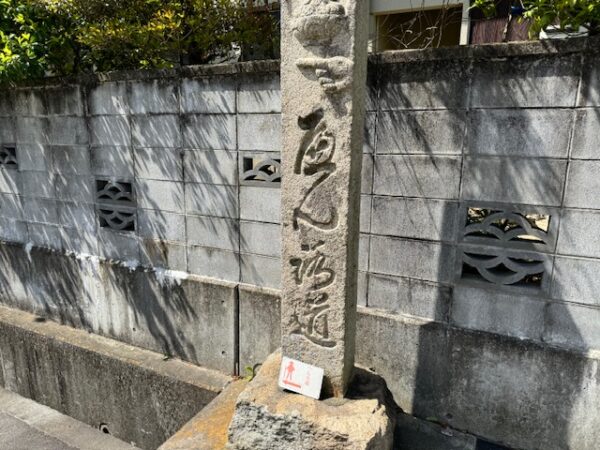
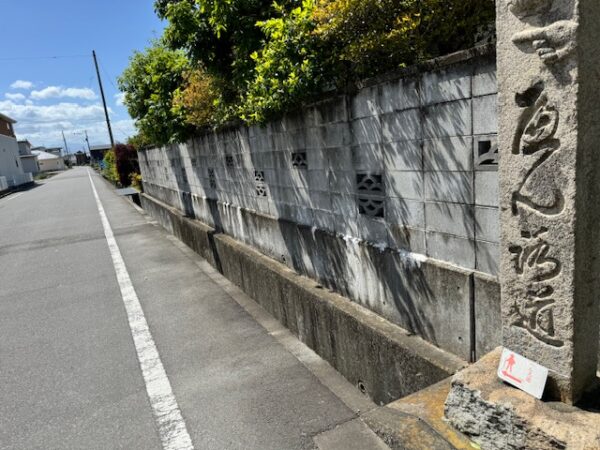
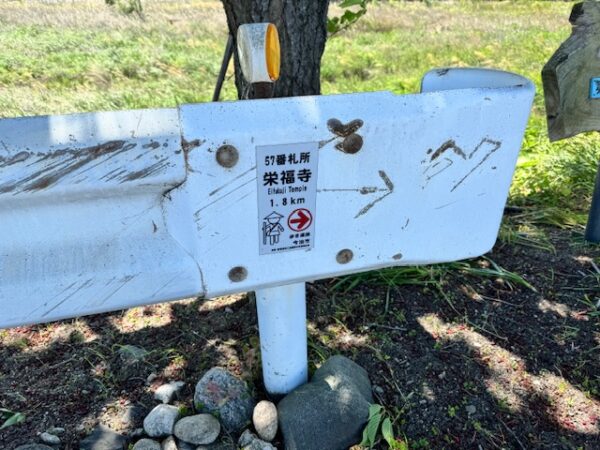
Signs on the henro road point pilgrims to temple 57. On my way!
57 Eifuku-ji
Temple of Good Luck
The temple is located in the countryside on the outskirts of Imabari city.
More signs on the path.
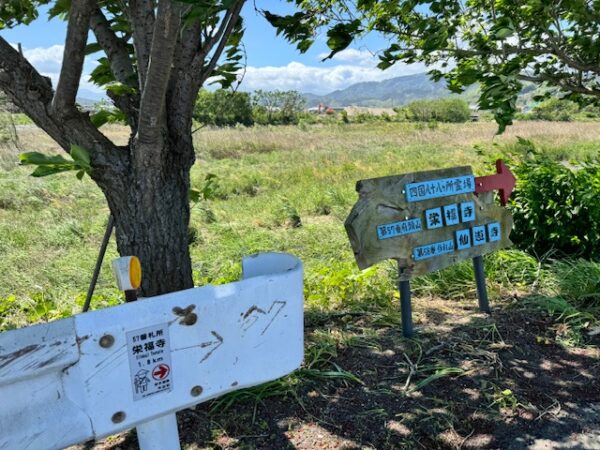
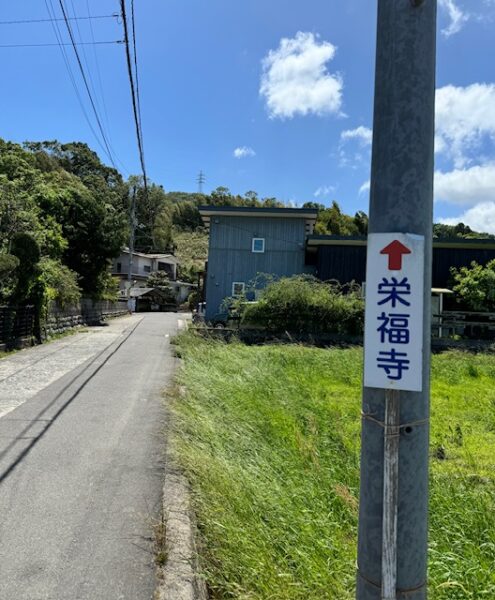
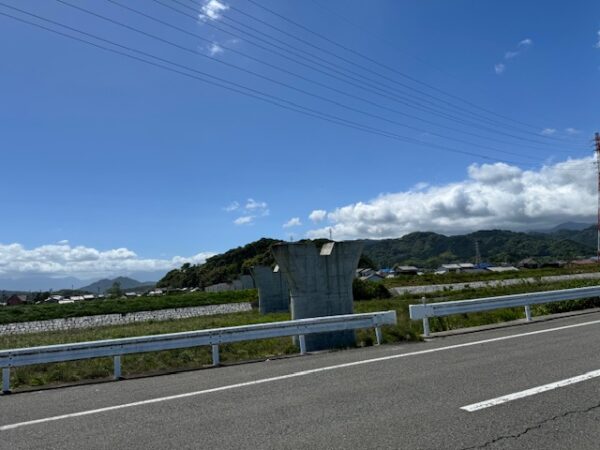
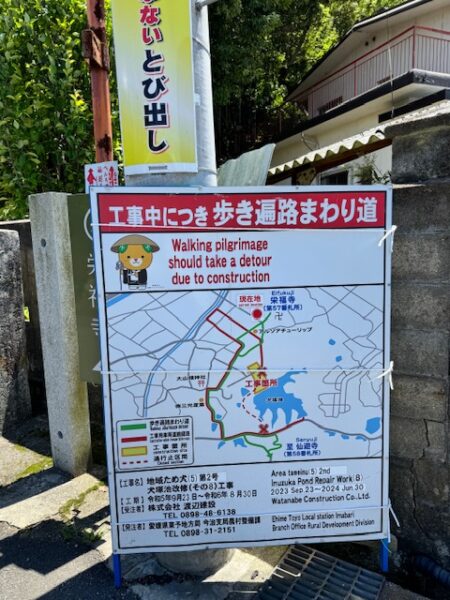
The variety of signs are helpful in all cases. One sign warns ohenros about road construction. Others along the way direct walkers to follow a safe detour.
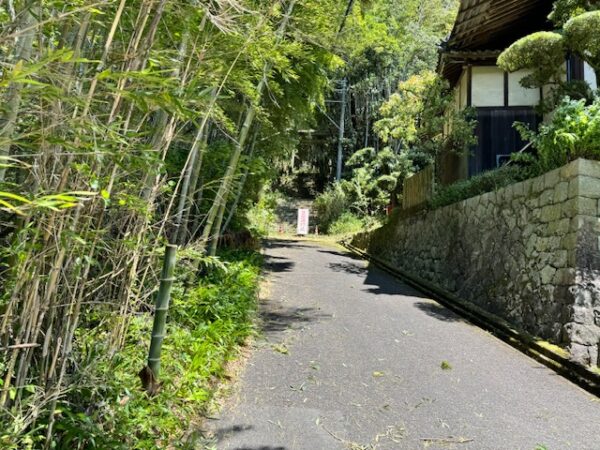
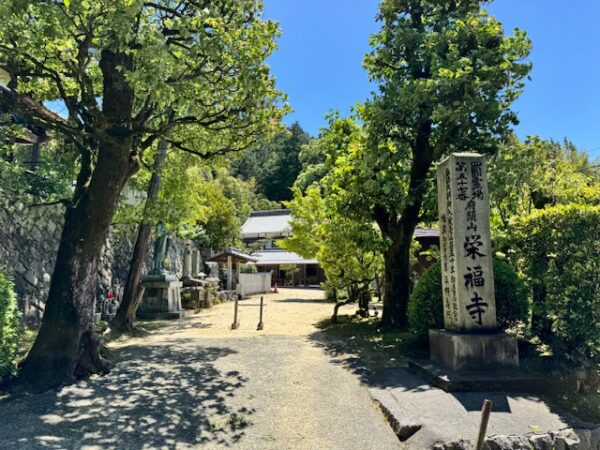
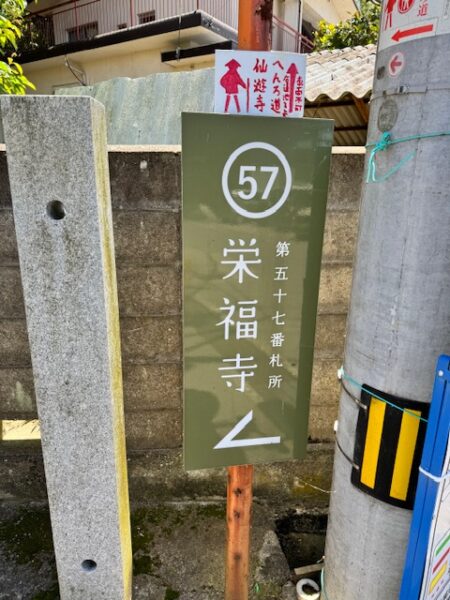
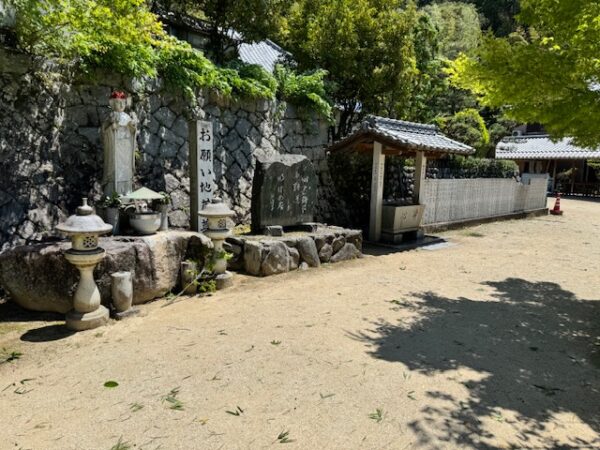
It is typical to find unpaved grounds in the city temples. On a windy day, the sand whirls around covering everything in its path. When this happens, I wish that rain had fallen just to keep the sand on the ground and out of my eyes.
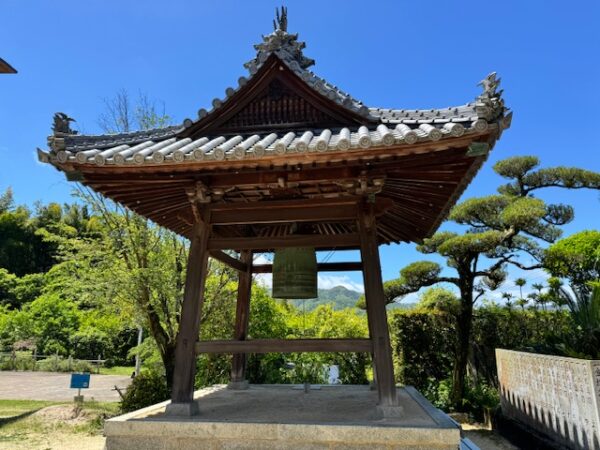
The backdrop for this belfry gives me Joshua Tree desert vibes.
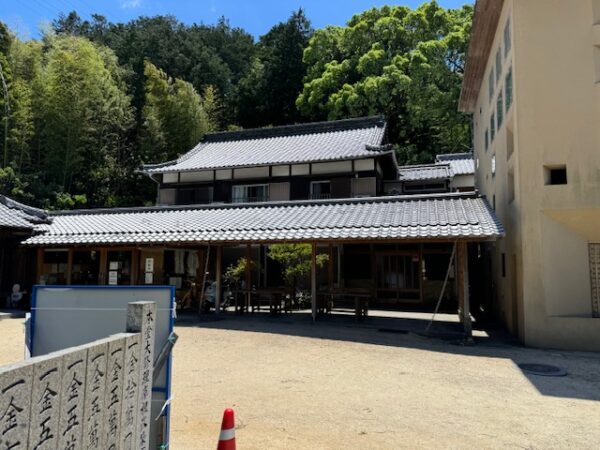
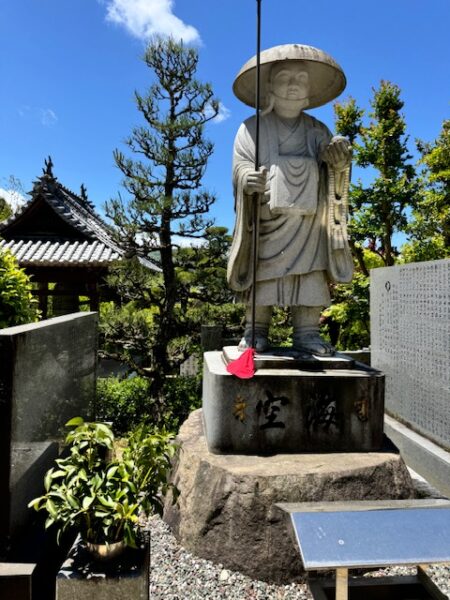
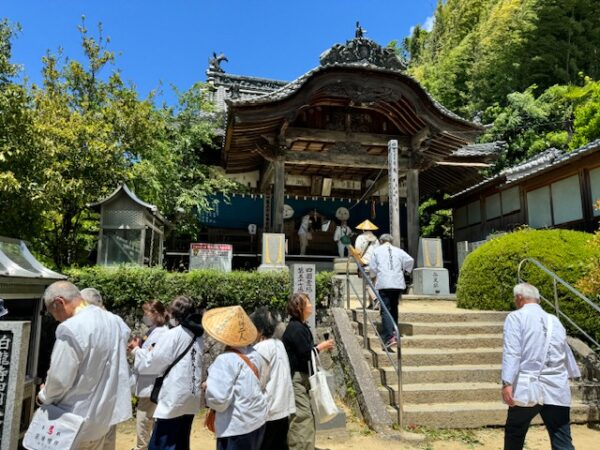
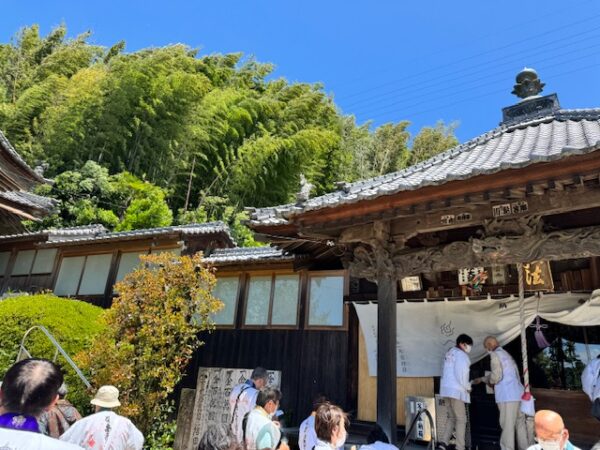
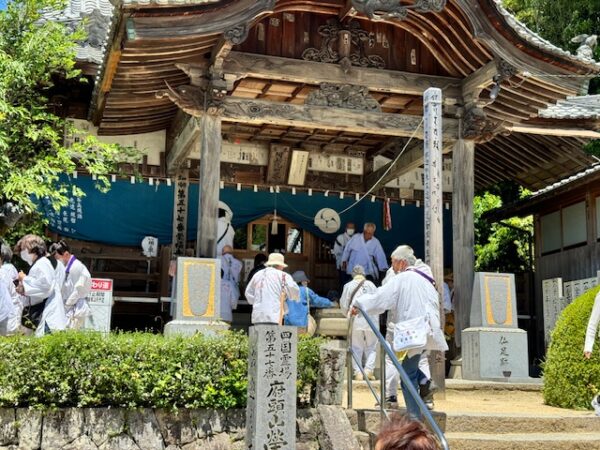
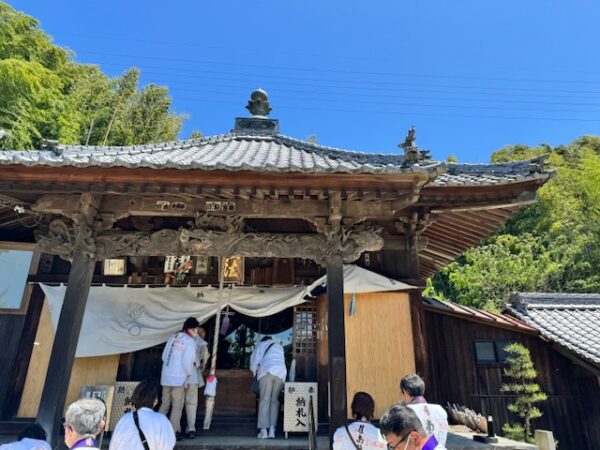
This is a group of bus pilgrims who suddenly appeared at the temple. So many pilgrims at one time changes the feel of the temple grounds. The sounds and activities are amped up a bit, especially at the temple office. Often one person will take the rest of the group’s stamp books and wait in line to get them stamped. It leaves everyone else to do their prayers and saves time for the group coordinator I am sure.
It can be a long wait for a single pilgrim like me. A few times at temples, the calligrapher will notice and summon me to the front of the “line” in the midst of signing a pile of books to take care of my stamp book. 🕉️
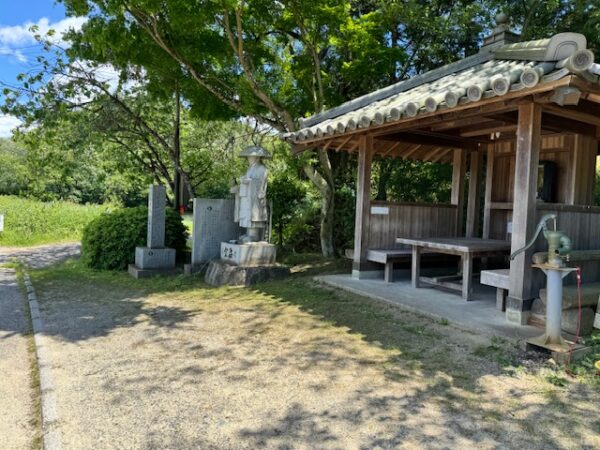
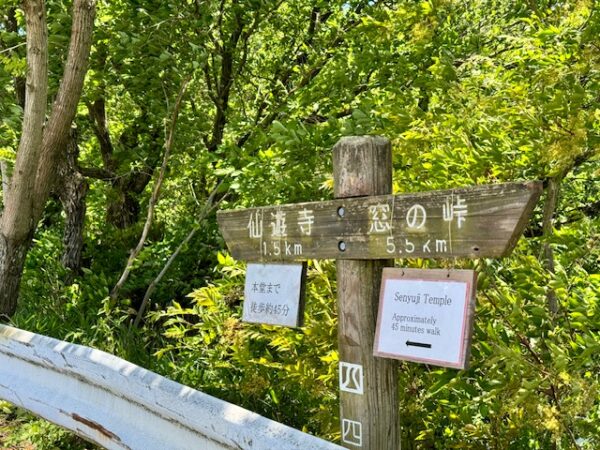
More signs pointing me on the way to more city temples.
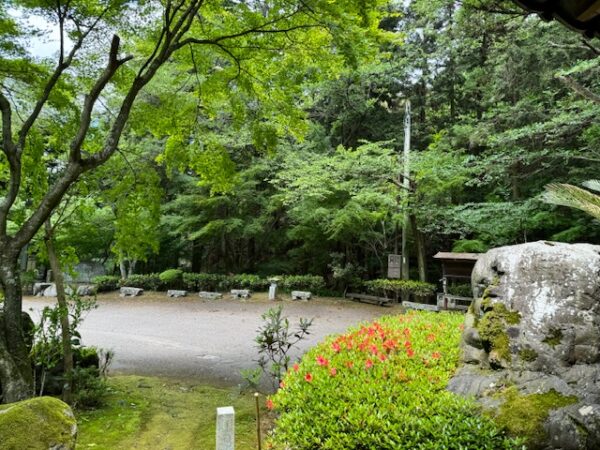
City Temples for a City Girl
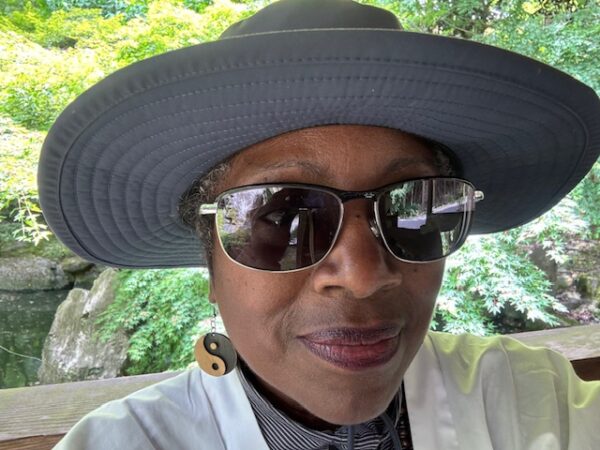
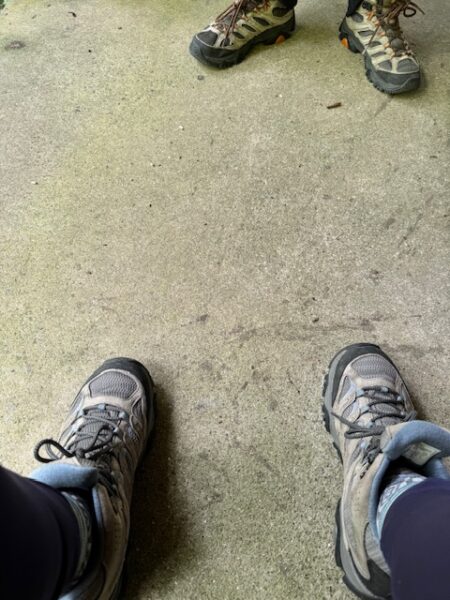
See you next time.
Baadaye and Mata Ne
Shirley J 🌸
This and several posts this summer will chronicle my pilgrimage in Japan where I am walking the 1200 kilometer-long Shikoku 88 temple pilgrimage. Read my announcement here.
I am excited, and I am here, still walking. And just know this, I will return to tell the tale!

T55-57
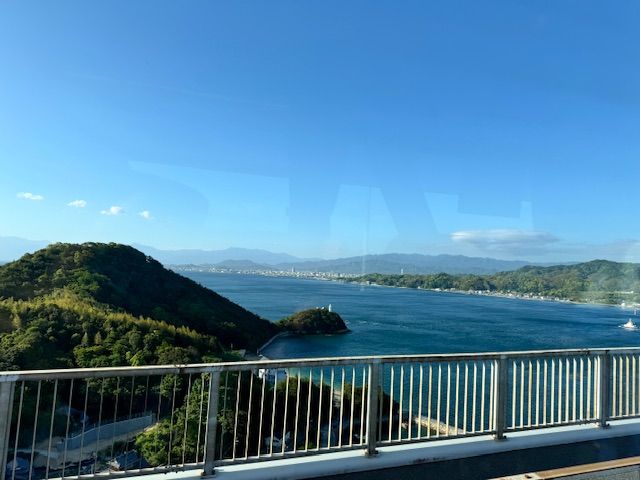
2 thoughts on “🌸 Noire Henro-san: Return to the Path”
A cluster of temple close to each other so you don’t have to switch sleeping places every day sure sounds nice after some of the troubles you had finding accommodations earlier.
You said that with a mouthful. Almost all the ohenros I meet on this stretch of trail say the same thing. Something as simple as the arrangement of temples feels empowering.
Comments are closed.